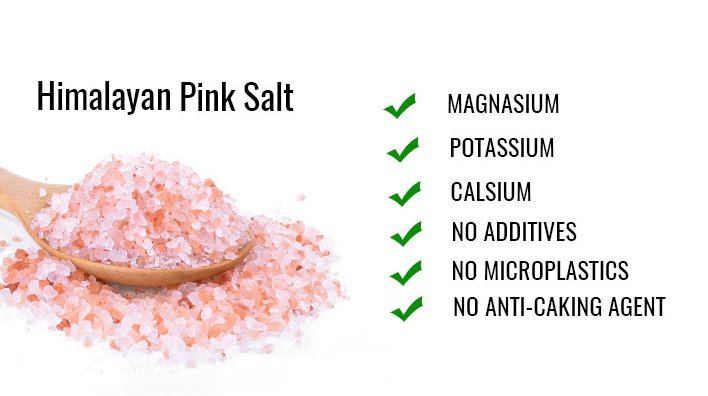Salt is an essential ingredient in virtually every cuisine worldwide, used not only for its seasoning properties but also for its ability to enhance flavours and preserve food.
One type of salt that has gained popularity in recent years for its unique flavour and culinary versatility is Himalayan salt. Mined from ancient salt deposits in the Himalayan mountains, this pink-hued salt has become a staple in many kitchens, both for its flavour and its potential health benefits.
In this article, we will explore the culinary applications, flavour profiles, and techniques for using Himalayan salt in cooking.
Understanding Himalayan Salt

Himalayan Salt Mineral ContentHimalayan salt, often referred to as pink salt, is believed to be one of the purest forms of salt available. It is harvested from deep underground salt mines in the Himalayan region of Pakistan, where it has been formed over millions of years.
The characteristic pink color of Himalayan salt comes from the trace minerals it contains, including iron, magnesium, calcium, and potassium. These minerals not only give the salt its distinctive color but also contribute to its unique flavour profile.
Culinary Applications
1. Seasoning: Like any other salt, Himalayan salt is used primarily as a seasoning to enhance the taste of various dishes. Its flavour is milder and less sharp than table salt, making it an excellent choice for those looking for a more nuanced salting experience. It can be sprinkled over grilled meats, vegetables, and salads to add a subtle salty note.
2. Salt Blocks and Plates: Himalayan salt blocks and plates are large slabs of salt that can be used for cooking and serving. When heated, these blocks can be used to cook meat, seafood, or vegetables, imparting a delicate saltiness and a unique mineral-rich flavour to the food. They can also be chilled and used as serving platters for foods like sushi and sashimi, adding a touch of elegance to your presentations.
3. Brining: Brining is a technique where food is soaked in a saltwater solution to add flavour and moisture. Himalayan salt can be used for brining, giving your meats, poultry, and even certain vegetables a subtle yet distinct flavour. The minerals in the salt can enhance the brine’s complexity, resulting in a more flavourful end product.
4. Finishing Salt: Himalayan salt can be used as a finishing salt, sprinkled on dishes just before serving. This allows its unique texture and color to shine while providing a final burst of flavour. Try it on chocolates, desserts, or even on top of freshly baked bread.
Flavour Profiles

Cooking on a Himalayan salt blockOne of the most appealing aspects of Himalayan salt is its distinctive flavour profile, which goes beyond mere saltiness:
1. Mild Salinity: Himalayan salt is less salty than table salt, making it suitable for those looking to reduce sodium intake while still enjoying the benefits of salt in their dishes.
2. Mineral Complexity: The trace minerals present in Himalayan salt contribute to its unique taste. You may detect subtle hints of sweetness, earthiness, or even a slight metallic tang, depending on the specific batch of salt.
3. Texture: Himalayan salt can have a slightly coarser texture compared to table salt, providing a satisfying crunch when used as a finishing touch on dishes.
Techniques for Using Himalayan Salt
1. Grilling: When grilling, try cooking your meat or vegetables on a Himalayan salt block. Heat the block slowly to prevent cracking, and the result will be a flavourful, perfectly seared dish.
2. Baking: Incorporate Himalayan salt into your baking recipes, such as bread and cookies. It can add a subtle complexity to your baked goods.
3. Salad Dressings: Use finely ground Himalayan salt in salad dressings, vinaigrettes, or marinades to infuse your dishes with a unique flavour.
4. Cocktails: Rim the glasses of your cocktails with finely crushed Himalayan salt for a visually appealing and slightly salty kick.
Health Benefits and Considerations
While Himalayan salt is often marketed as a healthier alternative to table salt due to its mineral content, it’s important to note that the quantities of these minerals are typically quite low. Therefore, the health benefits of Himalayan salt are modest compared to the potential risks of excessive salt consumption. Like all salts, moderation is key.
In conclusion, Himalayan salt offers a delightful culinary experience, thanks to its unique flavour profile and versatility. Whether you’re using it as a seasoning, cooking on salt blocks, or experimenting with its various applications, Himalayan salt can elevate your culinary creations to new heights.
Just remember to use it in moderation to fully savor its benefits while keeping your sodium intake in check. As you explore the world of Himalayan salt, you’ll find that it’s a valuable addition to your kitchen, enhancing the flavours of your dishes and delighting your taste buds with its subtle complexity.
We hope you found the information above useful. Leave a comment below, or contact us if you have any questions.
